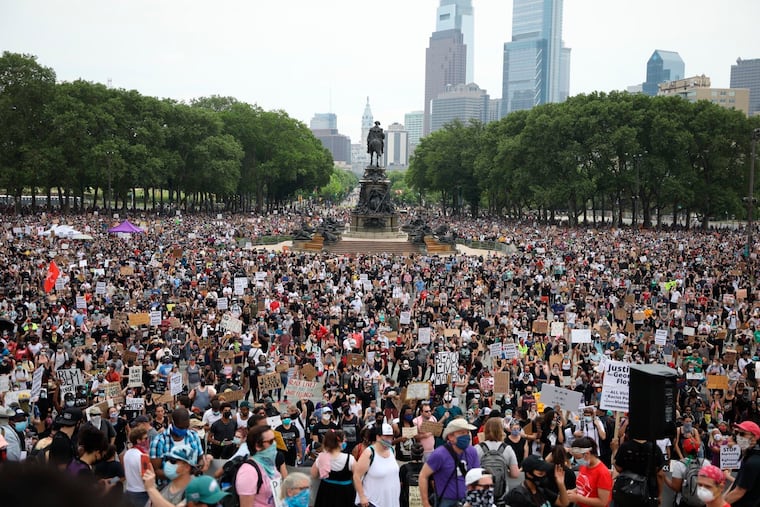Time for a more people-centered Ben Franklin Parkway | Editorial
The Parkway should be the powerful artery that energizes and unites the city, but it’s an artery that’s clogged with vehicles.

The Benjamin Franklin Parkway is Philadelphia’s living room — as well as the living embodiment of the city’s identity crisis. A sweeping boulevard conceived in the 19th century and built in the early 20th to connect City Hall and Fairmount Park, the Parkway serves as a mile-long “green carpet” populated by the city’s great institutions and ultimately ending at the steps of the Art Museum.
It’s a commons, where thousands gather to protest, parade, be entertained, or — for at least for five months last year — to live in tents in response to a city housing crisis. And it’s the backyard for the 70,000 or so people who live within a mile of its grounds. And it’s also a dangerous speedway that sees thousands of cars in and out of the city each day and sends pedestrians racing for their lives as they navigate it.
In other words, instead of serving a single coherent symbol of the greatness of a city, the Parkway is many places, often at odds with each other. It should be the powerful artery that energizes and unites the city, but it’s an artery clogged with vehicles — and whose progress has been clogged.
That’s why the news that the city has issued an RFP for a firm to provide a new plan for the Parkway to bring more order and design and elevate its potential as an urban public space is a bright spot in a year when one is sorely needed. Issued through the Department of Parks and Recreation, Office of Transportation Infrastructure and Sustainability (OTIS), and the Mayor’s Fund, the effort will be funded with a $360,000 grant from the William Penn Foundation. (Full disclosure: The William Penn Foundation has provided funding for grant-funded Inquirer projects.)
Every few years, there is renewed excitement about the Parkway’s potential and new energy around making it more coherent and people-centered. In 2002, the William Penn Foundation funded a process that launched a series of questions about what the Parkway should be. Some streetscape and other improvements were made. Then, in 2013, following the move of the Barnes to the Parkway, another effort was launched, centering on elevating its potential as a park and reducing its dominance by vehicles. In fact, that effort was called “More Park, Less Way.” Which is a good summary of the recurring heart of what holds the Parkway back as a public space.
What is different this time around are two forces that should drive discussion about what the Parkway should be: Our needs and assumptions about public space have been altered by the pandemic. And the demands for racial justice and equity reignited by the killing of George Floyd must be at the heart of discussions about public space — this public space in particular. To that end, the RFP (which has an April deadline) calls for an “ideas workshop” where members of the public can review design ideas among the RFP applicants. That public process, to be managed by the Lindy Institute for Urban Innovation at Drexel University, will be key to choosing the final plan. This represents a potential new chapter, not just for our parks, but our people.